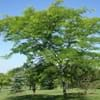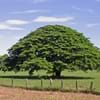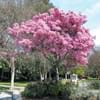Life Span
Perennial
Perennial
Origin
Northeastern United States, Southeastern United States, North-Central United States, Central United States, South-Central United States, Canada
China
Types
Honeylocust, Blacklocust
Not Available
Number of Varieties
Not Available
Habitat
Moist Soils
Forest margins, gardens, Grassland, Tropical regions
USDA Hardiness Zone
3-9
8-15
Sunset Zone
1a, 1b, 2a, 2b, 3a, 3b, 4, 5, 6, 7, 8, 9, 10, 11, 12, 13, 14, 15, 16, 18, 19, 20
H1, H2, 8, 9, 14, 15, 16, 17, 18, 19, 20, 21, 22, 23, 24
Habit
Oval or Rounded
Clump-Forming
Minimum Height
Not Available
Flower Color
Yellow green
Not Available
Flower Color Modifier
Bicolor
Bicolor
Fruit Color
Red, Brown
Not Available
Leaf Color in Spring
Light Green
Light Green, Dark Green
Leaf Color in Summer
Green, Light Green, Dark Green, Yellow green
Light Green
Leaf Color in Fall
Light Yellow
Light Green, Dark Green
Leaf Color in Winter
Not Available
Light Green, Dark Green
Leaf Shape
Pinnate
Grass like
Plant Season
Summer
Spring, Summer, Fall, Winter
Sunlight
Full Sun
Full Sun, Partial Sun, Partial shade
Type of Soil
Loam
Loam, Sand
The pH of Soil
Acidic, Neutral, Alkaline
Acidic, Neutral, Alkaline
Soil Drainage
Well drained
Average
Bloom Time
Late Spring
Not Available
Tolerances
Drought, Salt
Drought
Where to Plant?
Ground
Ground, Pot
How to Plant?
Seedlings
Seedlings, Transplanting
Plant Maintenance
Low
Medium
Watering Requirements
occasional watering once established
Keep the ground moist but not water-logged, Requires regular watering, Use and maintain water-efficient soaker hoses, Use Mulches to help prevent water loss during hot and windy weather, Water every two or three days during warmer months, Water twice a day in the initial period
In Summer
Lots of watering
Lots of watering
In Spring
Moderate
Moderate
In Winter
Average Water
Average Water
Soil pH
Acidic, Neutral, Alkaline
Acidic, Neutral, Alkaline
Soil Type
Loam
Loam, Sand
Soil Drainage Capacity
Well drained
Average
Sun Exposure
Full Sun
Full Sun, Partial Sun, Partial shade
Pruning
Prune in late summer or fall, Prune in late winter, Prune in the late winter or spring, Remove damaged leaves, Remove dead branches, Remove dead leaves
Remove damaged leaves, Remove dead branches, Remove dead leaves
Fertilizers
20-10-10, All-Purpose Liquid Fertilizer
All-Purpose Liquid Fertilizer
Pests and Diseases
Annosus Root Rot, Canker, Flatheaded borers, Foliage-feeding caterpillars, Oldman longhorn, Powdery mildew, Soft scales
Red blotch
Plant Tolerance
Drought, Flooding, Heat Tolerance, Salt
Drought
Flowers
Insignificant
None
Flower Petal Number
Single
Single
Foliage Texture
Fine
Medium
Foliage Sheen
Matte
Matte
Attracts
Cattle and horses, Not Available
Birds
Allergy
Mild Allergen
no allergic reactions
Aesthetic Uses
Cottage Garden
Beautification
Beauty Benefits
Glowing Skin, Good for skin, Improve hair condition, Improve skin condition, Skin inflammation
Not Available
Environmental Uses
Fixes Nitrogen, Food for animals, Shadow Tree, soil erosion prevension on hill slopes, Soil protection
Air purification
Medicinal Uses
anti-cancer, Antimutagenic, Rheumatoid arthritis
Not Available
Part of Plant Used
Pulp, Seeds, Wood
Whole plant
Other Uses
Animal Feed, As Fertilizers, Cattle Fodder, Traditional medicine
Culinary use, Used in construction, Used in Furniture, Used in making musical instruments, Used in paper industry
Used As Indoor Plant
No
No
Used As Outdoor Plant
Yes
Yes
Garden Design
Feature Plant, Shade Trees, Street Trees
Container, Feature Plant, Hedges, Screening / Wind Break, Tropical
Botanical Name
GLEDITSIA triacanthos
BAMBUSA multiplex 'Alphonso-Karrii'
Common Name
Honeylocust
Alphonse Karr Bamboo, Clumping Bamboo, Hedge Bamboo
In Hindi
हनी टिड्डी
अल्फोंस Karr बांस
In German
Honig Locust
Alphonse Karr Bamboo
In French
févier
Alphonse Karr Bamboo
In Spanish
langosta de miel
Alphonse Karr Bambú
In Greek
μέλι ακρίδων
Alphonse Karr Μπαμπού
In Portuguese
picar Lokyst
Alphonse Karr Bamboo
In Polish
kłuć Lokyst
Alphonse Karr Bamboo
In Latin
MOVEO Lokyst
Alphonse Karr Bamboo
Phylum
Magnoliophyta
Not Available
Class
Magnoliopsida
Not Available
Clade
Angiosperms, Eudicots, Rosids
Angiosperms, Commelinids, Monocots
Tribe
Not Available
Bambuseae
Subfamily
Caesalpinioideae
Bambusoideae
Number of Species
Not Available
Importance of Honeylocust and Alphonse Karr Bamboo
Want to have the most appropriate plant for your garden? You might want to know the importance of Honeylocust and Alphonse Karr Bamboo. Basically, these two plants vary in many aspects. Compare Honeylocust and Alphonse Karr Bamboo as they differ in many characteristics such as their life, care, benefits, facts, etc. Every gardener must at least have the slightest clue about the plants he wants to plant in his garden. Compare their benefits, which differ in many ways like facts and uses. The medicinal use of Honeylocust is anti-cancer, Antimutagenic and Rheumatoid arthritis whereas of Alphonse Karr Bamboo is Not Available. Honeylocust has beauty benefits as follows: Glowing Skin, Good for skin, Improve hair condition, Improve skin condition and Skin inflammation while Alphonse Karr Bamboo has beauty benefits as follows: Glowing Skin, Good for skin, Improve hair condition, Improve skin condition and Skin inflammation.
Compare Facts of Honeylocust vs Alphonse Karr Bamboo
How to choose the best garden plant for your garden depending upon its facts? Here garden plant comparison will help you to solve this query. Compare the facts of Honeylocust vs Alphonse Karr Bamboo and know which one to choose. As garden plants have benefits and other uses, allergy is also a major drawback of plants for some people. Allergic reactions of Honeylocust are Mild Allergen whereas of Alphonse Karr Bamboo have no allergic reactions respectively. Having a fruit bearing plant in your garden can be a plus point of your garden. Honeylocust has no showy fruits and Alphonse Karr Bamboo has no showy fruits. Also Honeylocust is not flowering and Alphonse Karr Bamboo is not flowering . You can compare Honeylocust and Alphonse Karr Bamboo facts and facts of other plants too.





